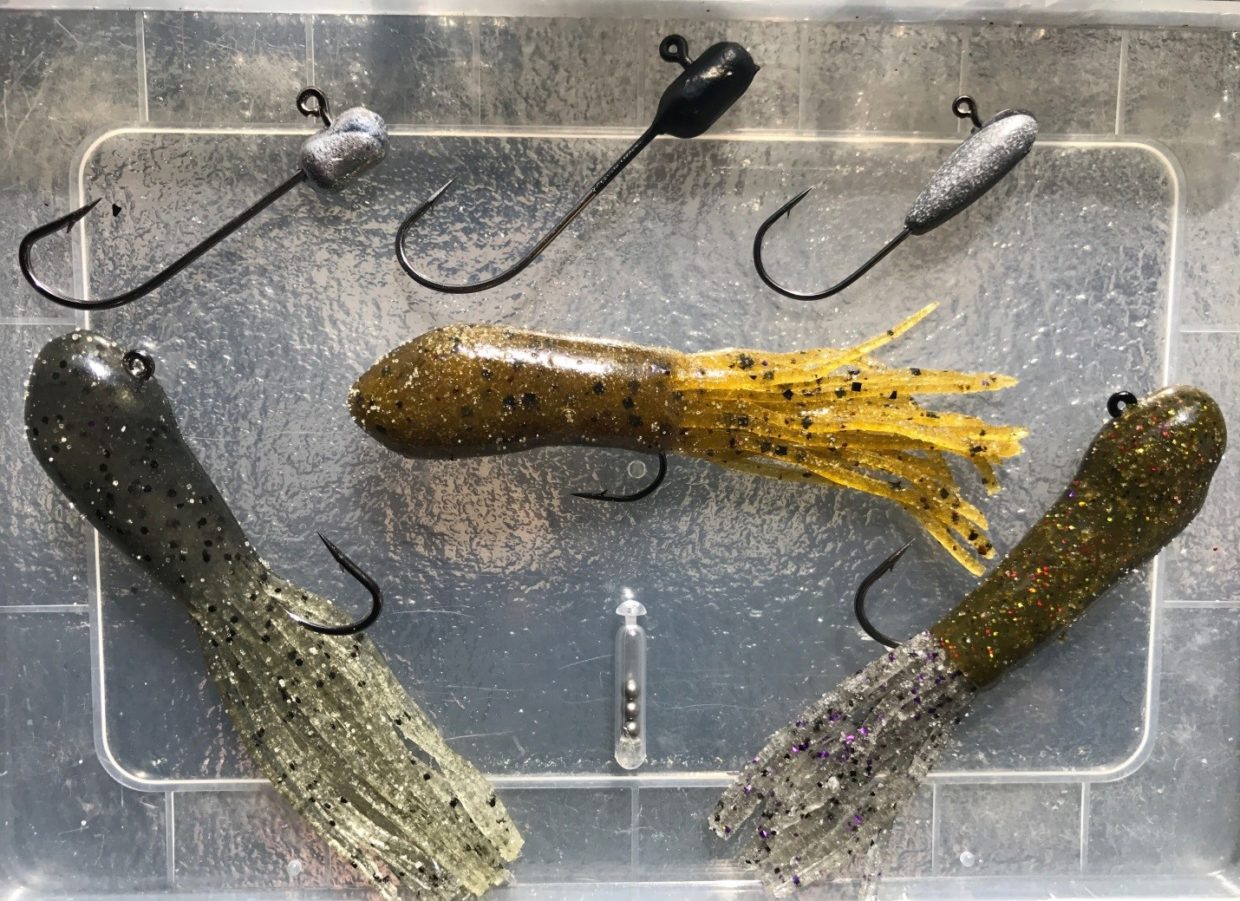Story & Photos by Ben Martin, Outdoor Action Ontario
As the summer starts to wind down and we near September, there is a sure-fire method long considered a bass-fishing staple that can also be applied to other species, as you will find pike and walleye also feasting on this offering when you throw it on Ontario lakes and rivers: the Tube!!!
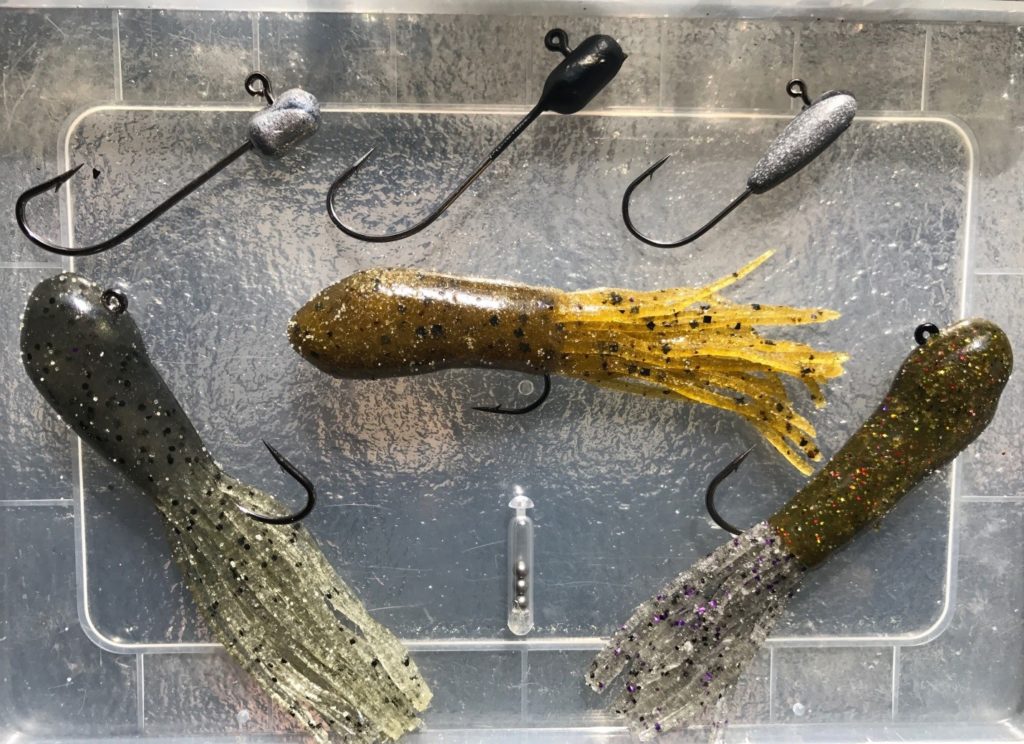
Tube jigs weighted from 1/8-3/8 oz. along with Set The Hook ™ , Strike King ™ and X Zone ™ tubes
The tube is an excellent bait imitator, as it mimics a crawfish/frog/baitfish. It all simply depends on how you retrieve it:
Bass: Cast the tube as far as you can, leave your reel bail open and let the tube sink to the bottom on totally slack line. Once it hits bottom, reel up slack, and pop your rod tip 1-2 feet in rapid fashion. This popping technique will trigger bass who are feeding on crawfish as well as trick them into thinking they are seeing an injured baitfish. Instincts take over, and you will have bass hit your tube very hard a lot of the time. Other times they will inhale the bait on its descent, so always ensure you use a sensitive rod to feel the slightest tick in your line.
Walleye: Again, cast out and let it sink, but instead of popping the tube, you are now going to slowly pull your rod towards you in a 9-12 o’clock fashion (called “dragging”.) This should be done slowly and with little to no slack in your line. You will feel them hit it almost every time.
Pike: Cast out and make erratic jerking motions, or slowly retrieve as though it was a bait fish while often stopping the retrieve to let the tube glide down into the depths – hungry pike will attack without prejudice! You just need to remember to check your line because if you manage to land a pike with braided line without it cutting it off due to their razor teeth, there is a good chance your line will have abrasions, and you may need to re-tie – failure to do so might mean you lose a trophy fish on your next cast!
Tips: Make sure to use braided mainline to rip through weeds – it will slice and dice through the toughest Ontario cabbage. A fluorocarbon leader may be appreciated by some but due to the long casts, OAO’s Ben Martin suggests using 10 pound braided line with no leader: “With moss green 10 pound PowerPro braid, that’s like a 2 pound diameter line for mono lines – fish won’t notice it especially in a lot of Ontario waterways that are heavily stained or weed-filled at this time of year, and more importantly you have full sensitivity and power to set the line at a distance with pure braid. You will immediately notice a higher hook-up percentage by making this transition.”
Also, with braided line and due to the slack you will have on casting and letting it drop, you will have fish pick the bait up while it’s on its descent –this means they will really have a chance to inhale your tube, so you need to ensure you have long nose pliers or forceps-styled pliers on you at all times, to get tubes/baits out of the fishes mouth that are ingested deeply. If you notice the fish has taken the bait too deep, cut your line and let the fish go, often times the hook will dissolve out or work its way out of the fish’s system. Otherwise you risk killing/harming the fish trying to remove the lure in question.
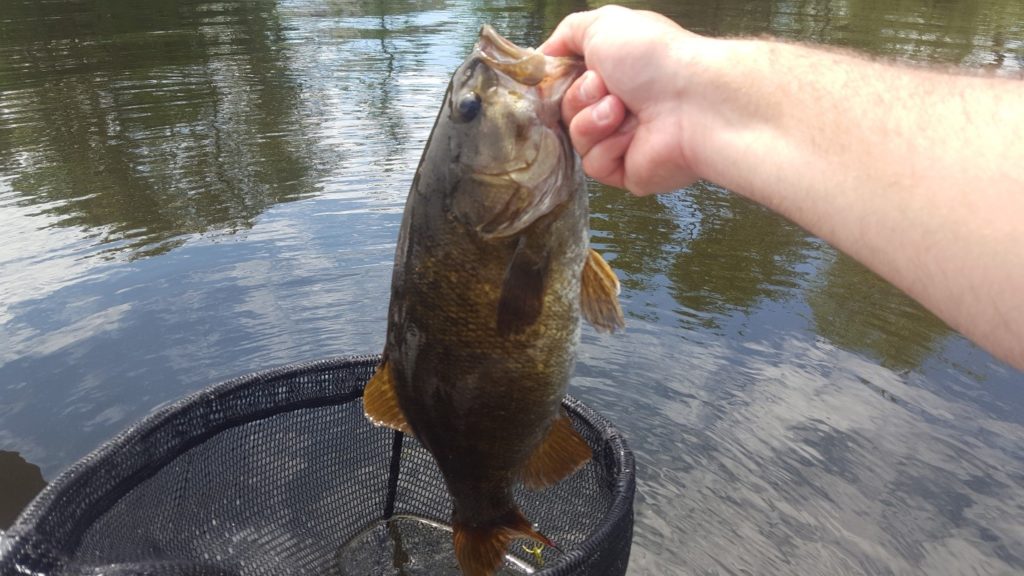
A heavy Ontario smallmouth that just couldn’t resist a Tube popped through dense weed cover
Pro-Tip: For big fish, take a bead insert and put it up into the tube along the shank of the tube itself. For extra sensory additions, lube the bead with a scent formula first before inserting. You will soon find that bead-inserted tubes will out-fish your non-beaded tubes constantly.
Gear considerations: Use tube jigs ranging in weight from 1/8 oz. to 3/8 oz. Natural colorations should take priority, such as green pumpkin.
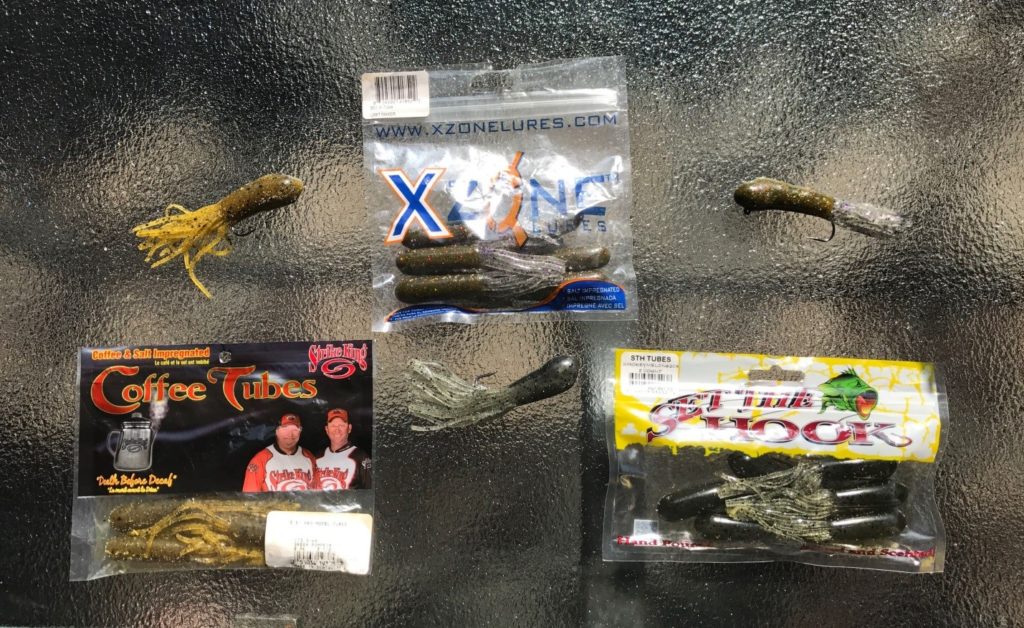
There are numerous brands of tubes and tube jigs (weighted hooks you insert into the tube bait) that Anglers should try out on Ontario’s waters. For best results, stick with lighter weights (1/8 – 3/8 oz.) and natural colors.
Rods & Reels: 6’8” to 7 foot medium to medium-heavy (OAO founder Ben Martin uses a Shimano Crucial 7’2” foot medium heavy as you often get into some larger fish and the backbone of the rod, paired with a reel with excellent drag will make the difference between landing the fish or not.) For the reel, you may want a 2500 to 3000 sized spinning reel (for extra line capacity due to the long-bomb casts recommended on this technique.) Martin has been using the Shimano Stradic 1000 as part of a 4-season long test phase of the Stradic series, to phenomenal result, but a larger reel would be more beneficial to most anglers.
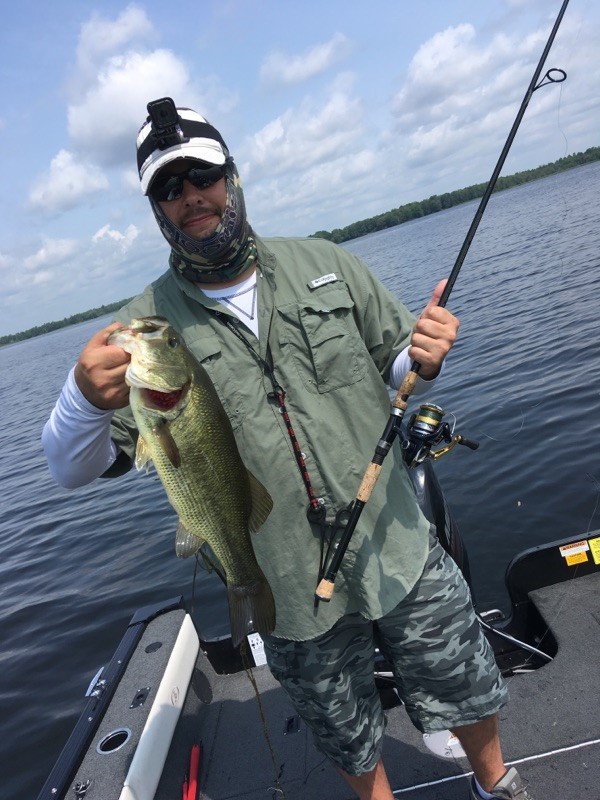
The author with another big Bass that couldn’t resist a tube being slowly popped -this time across a rock-strewn sand bar near a drop-off point.
Special note: You will catch big fish with these techniques. Please consider releasing the bigger fish you catch, to ensure future opportunities for other anglers and to protect the genetic strength of the fishery you are in. This is called “Responsible Harvest” and should be practiced by all ethical anglers who care about our waterways. Let ‘em go, let ‘em grow!!!
Most importantly – Tight lines and get out there and enjoy Ontario’s outdoors!
